How to use 3D to develop a dynamic Star Wars scene
Mark Molnar shows you how to use 3D models to enhance a Star Wars inspired futuristic racing scene.
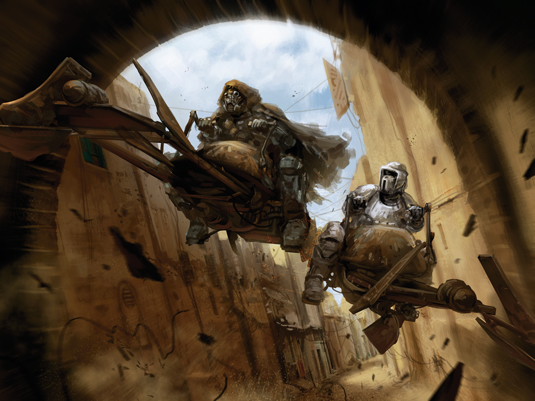
When learning extreme perspective painting techniques, it is often a good idea to borrow some methods from 3D art. Here, I am going to depict a dynamic racing scene between two speeder bikes in the back alleys of Tatooine. Because I'm keen to use an extreme perspective I do a rough thumbnail sketch and then pose a couple of free, simple speeder bike 3D models, using ZBrush.
Then I do a quick render without any sharp light sources in Keyshot after setting up my camera. This gives me a good head start with the perspective and composition, and acts as a base for the whole digital painting process.
Now I jump into Photoshop and start blocking in the alleyways. I use different photos from Morocco, and use the Free Transform tool to adjust their positioning.
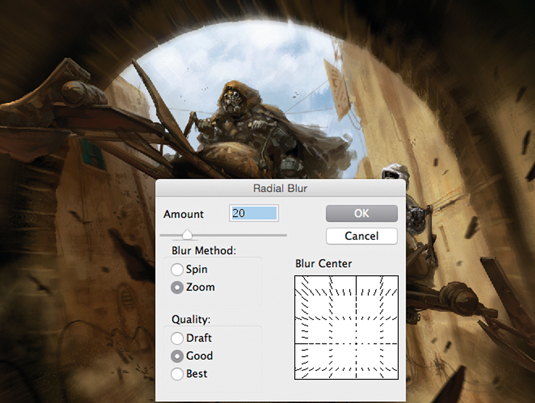
I build up my scene around a one-point perspective, and to strengthen my perspective even further I place the two speeder bikes coming from my vanishing point. This not only adds an extra level of depth, but gives my scene much more dynamism and speed.
From this point on the whole process involves painting to develop the scene, and the details. During this stage I make an effort to introduce as many overlapping elements as possible, because this helps the viewer understand what’s going on in different areas of the composition.
01. Start simple
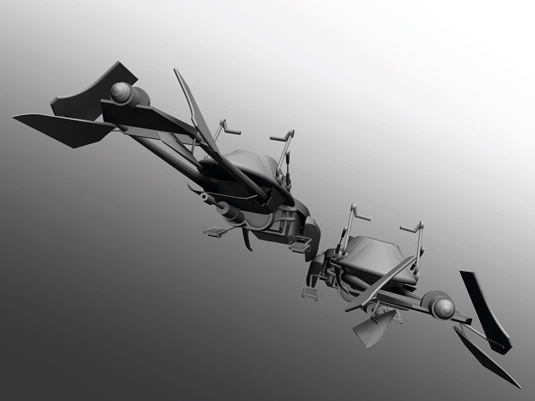
Creating a simple 3D scene to block in a more extreme perspective can help when creating action-oriented artwork. Even if you're not a 3D expert, play around with royalty-free models and set up a couple of lights and a camera to quickly try out more interesting compositions. I do exactly this with the two speeder bikes.
02. Fill the background
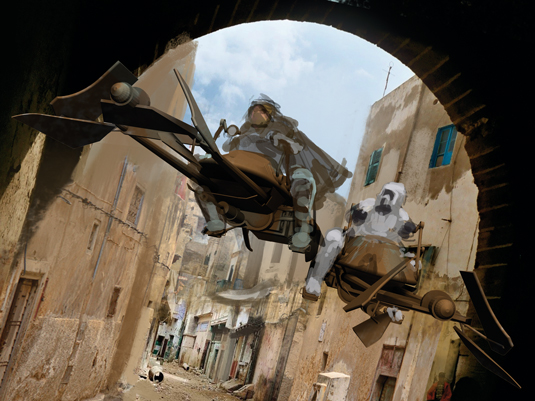
I use some photos to composite the background together. I also paint in the two figures on the speeder bikes and establish the positive-negative space ratio.
This describes areas in the image that either contain visual information or are relatively empty. It helps me to direct the viewer's eyes more effectively.
03. Final details
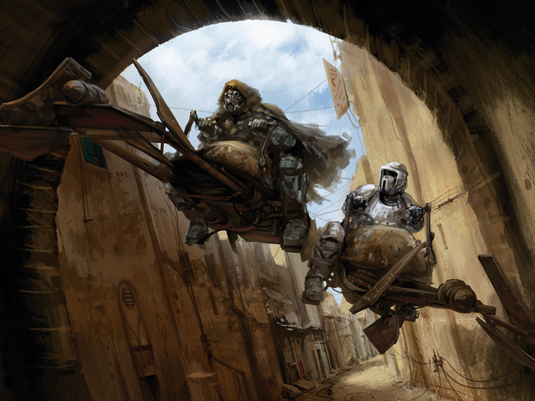
My goal is to create an impressionistic storyboard frame from one of the films. To this end, I try to keep the style rough and painterly and cover up most of my photo textures, using brushes that emulate oils and acrylics. I enhance the detailing around the two figures and bikes, which strengthens my focal areas.
Words: Mark Molnar
Mark works on projects for film and game companies. His past clients include Lucasfilm, Time Warner, Weta Workshop, Eidos, Applibot and Fantasy Flight Games. This article originally appeared in ImagineFX magazine issue 129.
Like this? Read these...
- How to illustrate a Star Wars-inspired environment
- Stunning book showcases best Star Wars art
- Photoshop tips, tricks and fixes to try today

Thank you for reading 5 articles this month* Join now for unlimited access
Enjoy your first month for just £1 / $1 / €1
*Read 5 free articles per month without a subscription

Join now for unlimited access
Try first month for just £1 / $1 / €1
Get the Creative Bloq Newsletter
Daily design news, reviews, how-tos and more, as picked by the editors.

The Creative Bloq team is made up of a group of art and design enthusiasts, and has changed and evolved since Creative Bloq began back in 2012. The current website team consists of eight full-time members of staff: Editor Georgia Coggan, Deputy Editor Rosie Hilder, Ecommerce Editor Beren Neale, Senior News Editor Daniel Piper, Editor, Digital Art and 3D Ian Dean, Tech Reviews Editor Erlingur Einarsson, Ecommerce Writer Beth Nicholls and Staff Writer Natalie Fear, as well as a roster of freelancers from around the world. The ImagineFX magazine team also pitch in, ensuring that content from leading digital art publication ImagineFX is represented on Creative Bloq.
